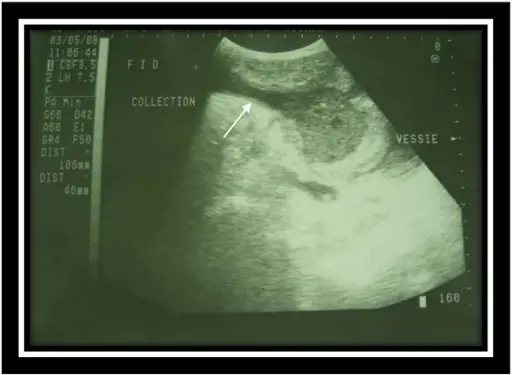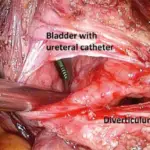Urachal anomalies of the bladder are abnormalities that result from incomplete involution of this embryonic structure, leading to various pathologies. Congenital UA can be divided into five groups: patent urachus, umbilical-urachal sinus, vesicoureteral diverticulum, urachal cyst, and alternating sinus. Typically, a patent urachus is detected around birth, while the other congenital UA tends to be asymptomatic.
What is the Pathology of Urachal Anomalies?
The pathology of urachal anomalies is:
-Etiology: The cause of urachal anomalies is an incomplete involution of the urachus.
-Genes involved: Not clear.
-Pathogenesis: The sequence of events that lead to urachal anomalies is due to abnormal sealing during embryogenesis. This may give rise to urachal cysts, patent urachus, urachal sinus, and urachal diverticulum.
-Morphology: The morphology associated with urachal anomalies shows different patterns.
-Histology: The histology associated with Urachal anomalies shows fragmented tubules separated by fibrous cords, but without a desmoplastic tissue response. No goblet cells, no atypia in the epithelium
How do Urachal Anomalies Present?
Patients with urachal anomalies typically affect males more than females in their adulthood. The symptoms, features, and clinical findings associated with urachal anomalies include the following in each abnormality, but are typically asymptomatic.
How are Urachal Anomalies Diagnosed?
Urachal disorders are usually diagnosed using ultrasound, sinogram, and VCUG.
How is Urachal Anomalies Treated?
Urachal anomalies are treated with surgical excision and antibiotics.
What is the Prognosis of Urachal Anomalies?
The prognosis of urachal anomalies is usually good with proper treatment.



